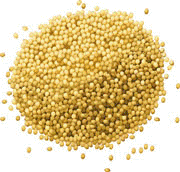International Sorghum and Millet Collaborative Research Support Program (INTSORMIL CRSP)
Date of this Version
2000
Document Type
Article
Citation
2000 INTSORMIL
Abstract
Presently, worldwide, more than 800 million people are hungry and over I billion are desperately poor, and food demand is increasing rapidly. The majority of poor live in rural areas in developing countries and agricultural and food systems development is vital to economic growth; improving environmental quality; strengthening nutrition, health and child survival; improving the status of women; and promoting democratization. It is estimated that by 2000, the number of people living in developing countries will grow from 4.9 billion to 6.8 billion people. More than 1.3 billion people today live on less than one dollar per day. It is estimated that the number of hungry people will exceed one billion by 2020. The global population of underweight children below age five is expected to increase from 193 million in year 2000 to over 200 million in year 2020. Increased production of cereals, which are crucial sources of food energy and other nutrients, is necessary to reduce world hunger.
Sorghum and millet are two major cereal grains, particularly in semi-arid regions of the world. In 1999,65.8 million metric tons (MT) of sorghum were produced worldwide, of which 19.7 million MT were produced in Africa, mainly for direct consumption by humans, and 14.7 million MT were produced in the United States, mainlyfor livestock feed to produce meat for human consumption. In the crop year 1997-1998, the United States exported 5.3 million MT of grain sorghum mainly for livestock feed, and in 1998, U.S. grain sorghum exports were worth $531 million. Large areas are planted to sorghum each year. For example, in 1999 sorghum was produced on 44.8 million hectares (ha, or 173,036 square miles, [sq mi]) worldwide, 23 million ha (88,728 sq mi) in Africa, and 3.4 million ha (13,278 sq mi) in the United States. About 500 million people worldwide depend upon sorghum for food, and most of these people are in developing countries where droughts and famine are common occurrences. Clearly, sorghum production and utilization as food and feed are vitally important to developing countries and to the United States.


